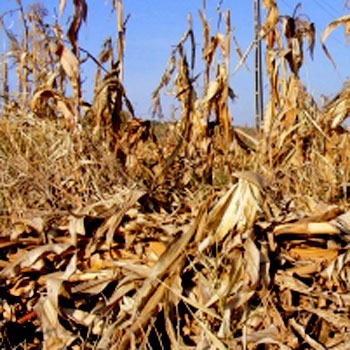|
by Matt Bewig from AllGov Website
With the drought of 2012 - already the worst in the U.S. since the 1950s - expected to cause dramatically smaller corn and soybean crops, the United Nations Food and Agricultural Organization (FAO) has called on the U.S. to suspend the use of corn in producing biofuels like ethanol in order to avert a food crisis.
So far, however, Agriculture Secretary Tom
Vilsack has rejected this suggestion, arguing that ethanol production
supports many jobs and reduces the price of gasoline for Americans.
As a result, about,
Critics of the fuel standard argue that the use
of corn to make ethanol is a major factor in the tripling in the price of
corn since 2005 and likely contributed to a
food crisis in 2007-08.
As a result, the USDA is predicting that farm
prices for corn will average $7.50-$8.90 per bushel, up from the $5.40-$6.40
per bushel it projected just a month ago and up to 85% higher than the $4.80
per bushel projected at planting time in April. Some private forecasters
have projected even lower yields per acre, which would lead to even higher
prices.
For example, the corn in a $4.00 box of corn flakes is worth about 7 to 8 cents. Most of the price is for processing, transportation, advertising, and an oligopoly premium.
The poor and near-poor, however, will feel the
price rise at the grocery store far more acutely.
In addition to the U.S. drought, severe weather has damaged agricultural production in other major grain exporting countries as well, including,
...raising concerns of global food shortages that will increase food prices and lead to widespread hunger.
U.S. livestock producers, who feed corn to their
animals, also want the ethanol quota waived, and 156 House members and 25
senators have signed letters to Lisa Jackson, administrator of the
Environmental Protection Agency, asking her to issue a waiver on the
ethanol standard.
|

